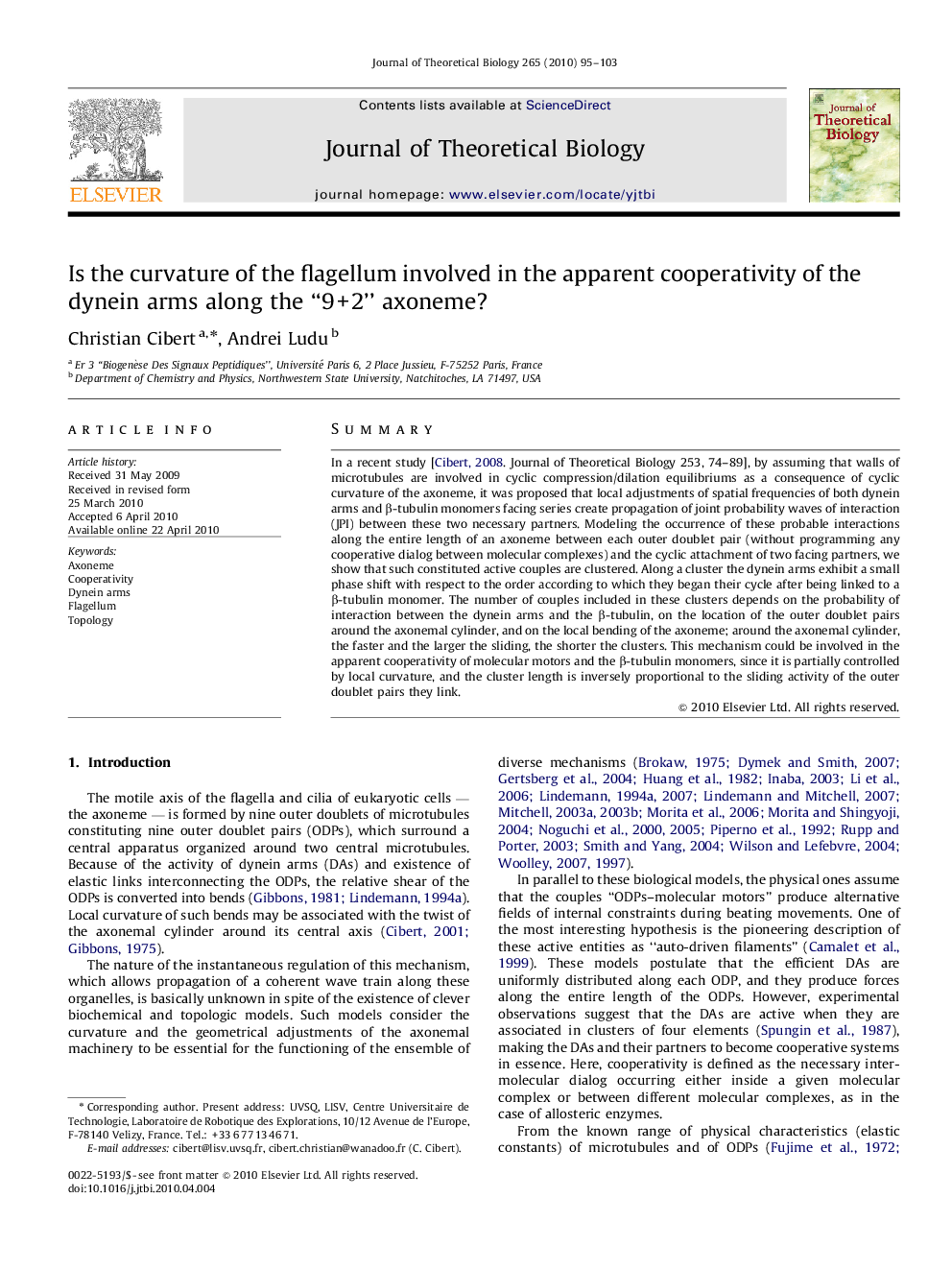| Article ID | Journal | Published Year | Pages | File Type |
|---|---|---|---|---|
| 4497606 | Journal of Theoretical Biology | 2010 | 9 Pages |
SummaryIn a recent study [Cibert, 2008. Journal of Theoretical Biology 253, 74–89], by assuming that walls of microtubules are involved in cyclic compression/dilation equilibriums as a consequence of cyclic curvature of the axoneme, it was proposed that local adjustments of spatial frequencies of both dynein arms and β-tubulin monomers facing series create propagation of joint probability waves of interaction (JPI) between these two necessary partners. Modeling the occurrence of these probable interactions along the entire length of an axoneme between each outer doublet pair (without programming any cooperative dialog between molecular complexes) and the cyclic attachment of two facing partners, we show that such constituted active couples are clustered. Along a cluster the dynein arms exhibit a small phase shift with respect to the order according to which they began their cycle after being linked to a β-tubulin monomer. The number of couples included in these clusters depends on the probability of interaction between the dynein arms and the β-tubulin, on the location of the outer doublet pairs around the axonemal cylinder, and on the local bending of the axoneme; around the axonemal cylinder, the faster and the larger the sliding, the shorter the clusters. This mechanism could be involved in the apparent cooperativity of molecular motors and the β-tubulin monomers, since it is partially controlled by local curvature, and the cluster length is inversely proportional to the sliding activity of the outer doublet pairs they link.
